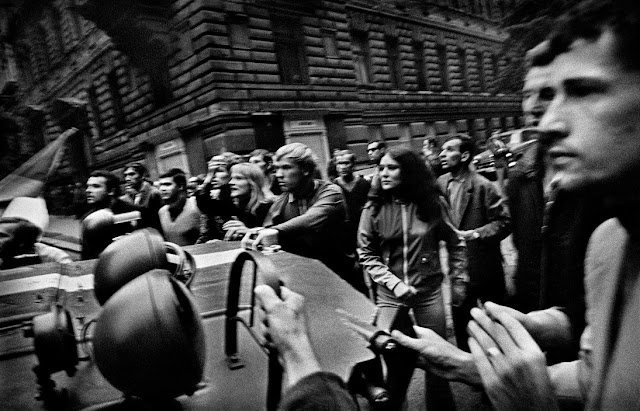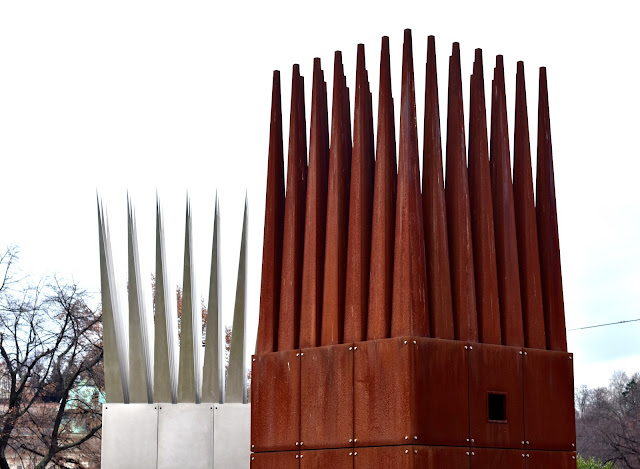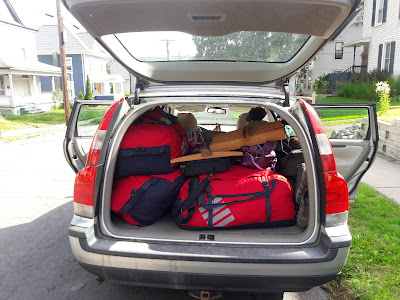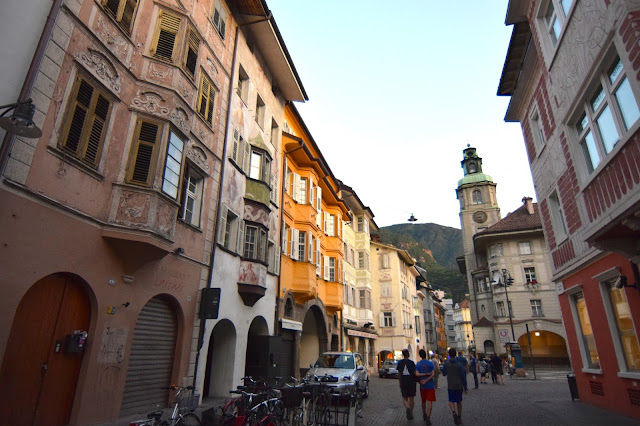Torch No. 1
In January 1968 — 20 years into the communist rule of the region — Alexander Dubček became the secretary of the Communist Party of Czechoslovakia amidst a period of changes and reforms that seemed to indicate a loosening of Moscow's grip on Czechoslovak politics. Dubček proclaimed he wanted to incorporate "socialism with a human face." He "eased press censorship, allowed greater artistic and cultural freedom, pardoned victims of political purges, eased travel restrictions, promised to guarantee civil rights and liberties and permitted a degree of democratic reform." Dubček's reforms and promises were not meant to signal an end to communist influence but instead to shore up support for the government by eliminating some of its most repressive features as well provide some hope for citizens demoralized by economic stagnancy.
This period of political liberalization, known as Prague Spring, was widely embraced especially among students and young people. Energized by the reforms, they pressured the government for further democratization. The movement gained momentum, and control of the message slipped away from party leaders. Despite his stated loyalty to Moscow and the Warsaw Pact, Dubček did nothing to quell the growing movement toward liberalization.
Ultimately Soviet leader Leonid Brezhnev lost his patience and demanded Dubček re-impose strict communist rule. When Dubček failed to respond in a meaningful way, 200,000 troops and 2,000 tanks of the Warsaw Pact rolled into Prague in August 1968 to do the dirty work.
 |
| Wenceslas Square, 21 August 1968. Photo: Josef Koudelka |
Initially many protested the arrival of the troops and tried to keep them from advancing in the city. Some efforts were humorous. Street signs came down or were switched up (and anyone who's ever tried to navigate their way around the warren of Old Town's streets and alleys can appreciate how difficult it would be to find Wenceslas Square without a functioning GPS). People pretended to not understand Russian when asked for directions. (They totally knew Russian.)
 |
| Photo: Josef Koudelka |
In spite of Dubček's plea for citizens to respond peacefully, impassioned Czechoslovakian youths shouted and threw stones at tanks. Obviously they were no match for the troops. Ultimately 82 citizens died as a result of the invasion. (As an aside, Karl wrote a bit about this in the blog back in 2011.)
Having experienced a taste of a more open, democratic society, many were angry about the reinstatement of authoritarian rule. One Charles University student grew frustrated by the anemic effect of continued public strikes and demonstrations. He feared protesters would grow weary of dissent and resign themselves to the presence of the Communists. He decided the best way to get the government's attention and rally public support would be a radical and shocking protest.
 |
| Jan Palach, from the National Monument on Vítkov |
On the morning of 16 January 1969, 20-year-old Jan Palach drafted four almost identical letters and signed them, "Torch No. 1." The letters made demands regarding the return of freedom of speech and urged vigorous public protest in support of these demand. He indicated that he was part of a group that had made a pact to self-immolate as a statement of protest regarding the restrictions imposed by the Warsaw Pact invasion. If demands were not met by 21 January, "other torches" would ignite. Three letters were mailed (to a friend, a student leader, and the Union of Czechoslovak Writers). A fourth was put in a briefcase which Palach kept with him.
Palach, who was described as quiet, pensive, and very well read, then took his briefcase, purchased two containers and filled them with petrol, and headed to the National Museum on Wenceslas Square. There he removed his coat, poured a bottle of petrol on his body, and set himself on fire.
 |
| Graphic artist's rendering of Palach's protest, displayed at the National Monument on Vítkov |
Horrified witnesses reported that Palach then jumped up and started running. He was nearly hit by a tram before he stumbled and fell. At that point people rushed to him and extinguished the flames with their coats.
 |
| Memorial sculpture by artist Barbora Veselá marks the site where Palach fell. Photo source. |
Palach was taken to a hospital near Charles Square. He died from his injuries three days later.
 |
| Palach's ID card was found among his belongings. (From an exhibit at the National Monument on Vítkov) |
Palach was not the first to protest in response to the invasion of Czechoslovakia by Warsaw Pact troops in such a manner. Ryszard Siwiec, a 59-year-old Polish man, self-immolated in September 1968 at a public event in Warsaw attended by thousands. But authorities managed to suppress news of Siwiec's sacrifice, and word of his death was acknowledged and broadcast only after Palach died.
Palach's death, conversely, attracted national and worldwide attention. When the casket bearing his remains was displayed in the Karolinum, tens of thousands of people paid their respects. A very public funeral procession brought his casket through the historic streets of Old Town to Olšany Cemetery, where he was buried following a private ceremony. But because his grave became a pilgrimage destination for those sympathetic to the message of his act, the secret police succeeded in pressuring Palach's parents to have his body exhumed and cremated in 1973. In 1990 Palach's grave was restored and his remains returned to Olšany.
 |
| Palach's grave at Olšany Cemetery on 1 November 2017 ~ All Souls' Day |
Almost six weeks after Palach's protest, Jan Zajíc, another Czech student, self-immolated in a house on Wenceslas Square. He died at the site. He would have turned 19 the following week. Some sources identify Zajíc as Palach's friend who was part of the pact of the "torches." Others imply that Zajíc was inspired by Palach but did not know him. There is little evidence to confirm that a pact actually existed among a group of students.
Together the young men are commemorated in two joint memorials on Wenceslas Square.
The Veselá cross ~
And a more traditional memorial located just northwest (or in front of) the equestrian statue of St. Wenceslas. Flowers and lit candles were left at both sites last Friday, 19 January 2018, the 49th anniversary of Palach's death.
 |
| 19 January 2018 |
 |
| 19 January 2018 |
Palach's protest garnered international attention, stirring sympathy for victims of communist regimes. For numerous years following Palach's example, more "torches" self-immolated both in Czechoslovakia and in other Eastern Bloc countries. And over time Palach was honored and commemorated throughout Europe, in the form of memorial sculptures as well as the renaming of streets and squares.
Czech-American architect and artist John Hejduk designed a memorial tribute to Palach in the 1980s, entitled "House of the Suicide and House of the Mother of the Suicide." The original structures were made of wood and built as part of a teaching project at Georgia Tech in 1990. In 2002 the city of Prague commissioned a redesign of the structures to be constructed of metal and displayed at Jan Palach Square on the banks of the Vltava River.
 |
| House of the Suicide and House of the Mother of the Suicide by John Hejduk |
Unveiled in January 2016, the sculptures represent two characters: the light, silver, sunburst a son and the dark, contracted, contained piece his mother.
"Hejduk's design pays tribute to both Palach and his mother, Libuše Palachová, who battled the ruling regime's attempts to discredit her son and the dissent represented by his sacrifice," wrote Kelly Chan in this Metropolis article.
"My father thought of the spikes as a sunburst, as sonic — the mother is quiet and turning in on herself, " Hejduk's daughter, Renata, noted. "Implosion of sound and explosion. The sonic act when Jan dies is his sound going out into the universe as an act against the apathy of the students in 1968. He set himself on fire to set them on fire."
 |
| St. Vitus Cathedral and Prague Castle (both right) across the Vltava from House of the Suicide |
In January 1989, dissidents proclaimed the days around the 20th anniversary of Palach's martyrdom Jan Palach Week. Activists planned marches and demonstrations. Tension between the ruling government and opposition escalated. Finally the demonstration at Wenceslas Square was officially banned and opposition leaders Václav Havel and Dana Nemcová were arrested. This only incited activists to follow through with the demonstration, where they were met with water cannons and increased security forces. By the end of January more than 1,400 dissidents were arrested.
While Mikhail Gorbachev's policies of glasnost and perestroika set the stage for releasing the Soviet Union's grip on Eastern bloc countries, the events of Jan Palach Week are believed by some to be the beginning of the end of communist rule in Czechoslovakia. Dissidents maintained pressure on the regime throughout the year just as a growing wave of revolutions played out in other central and eastern European countries.
November brought the Velvet Revolution, a dismantling of the one-party state in Czechoslovakia and non-violent transition of power to a parliamentary republic. Alexander Dubček was elected speaker of the federal parliament on 28 December. And the next day Václav Havel was democratically elected president of Czechoslovakia.
 |
| "He set himself on fire to set them on fire." |
He died because he wanted to shout as loud as possible. He wanted us to realize what was happening to us, to see what we were really doing, and to hear what we were saying in those times of reputedly inevitable concessions, “reasonable” compromises, and hopefully clever tactical ploys. We started forgetting that something has to resist even the greatest pressure, something fundamental that cannot be bought or sold, but that is absolutely essential for maintaining our human dignity.
~ From Charter 77 on the 20th anniversary of Jan Palach’s self-immolation
15 January 1989







This is such an important story and includes the sculptures I didn't know about. I heard his brother giving an interview about it and maybe there is a documentary being released this year. So sad that these young men were in such distress as to burn themselves. There is also a mask of his actual face on the side of a building (across from Rudolfinim). Gives me the chills every time.
ReplyDeleteThanks, and I agree — it's an incredibly powerful and important story. And until I wrote this up and put it all together, I had no idea just how influential the actions of Palach, Zajíc, and the other torches were.
DeleteI knew about the death mask sculpture and had seen pictures of it but wasn't sure where exactly it was located. I'll look for it next time I'm down in Josefov.
There's a 3-part mini-series from 2013, "The Burning Bush," less about Palach's act itself and more about a defamation case pursued by (I think) his mother against a politician for defamation of Palach.
DeleteIMDB link: http://www.imdb.com/title/tt2280344/
On Tuesday my class met with an acquaintance of mine, a man of 54. He described going to the Jan Palach commemoration in January, 1988 (it was of course banned, but a significant number of people showed up). By his own description, it's not that he was particularly inspired by Palach's act, but rather, he wanted to protest the stupid, oppressive regime that was dragging the country down, and honoring Palach's memory was a way of protesting.
ReplyDeleteBut then he got to the square and saw all the people who had shown up, and he reflected on just what it was Palach had done, and why, and what drove him to it, and he found himself deeply moved. And he looked around at all the people who were there objecting to being misruled, and he thought, We are the fruits of his sacrifice.